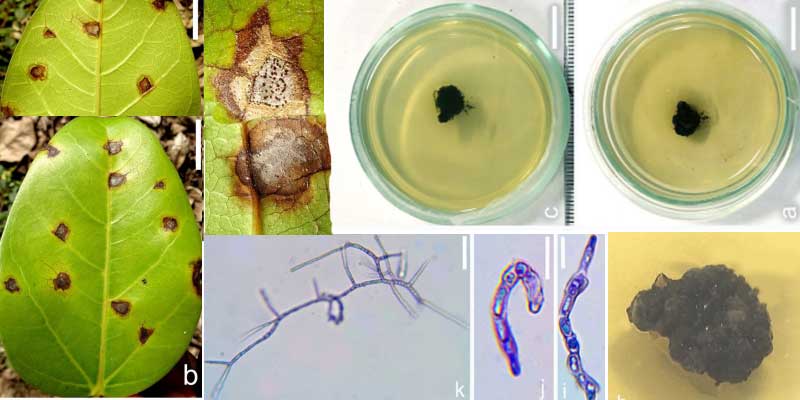

A team of eminent scientists from three premier Indian institutions, the Kerala Forest Research Institute (KFRI), Banaras Hindu University (BHU), and Agharkar Research Institute (ARI), Pune, has made a landmark discovery in the field of fungal taxonomy and biotechnology. The group has identified a new genus of fungus, Neokamalomyces indicus, with promising potential in the development of antifungal and anticancer compounds. This significant breakthrough was the result of nearly two years of collaborative research. It was recently published in the prestigious journal Phytotaxa on November 3.
The research was led by Dr. Raghvendra Singh, Senior Assistant Professor at BHU, along with his team of four researchers. He was joined by Dr. Paras Nath Singh from ARI and Dr. Shambhu Kumar from KFRI. Together, they successfully traced, isolated, and documented a completely new fungal lineage, which they named Neokamalomyces indicus.
The name honours Prof. Kamal of Deen Dayal Upadhyay Gorakhpur University, a renowned Indian mycologist recognised for his outstanding contributions to fungal biodiversity research in India. The suffix indicus reflects the country of origin of the species — India.
The discovery began during a survey in July 2019, when researchers collected fungus-infected banyan leaves from the forests of Uttarakhand. The affected leaves exhibited yellow and brown lesions that gradually spread across the entire leaf surface. After growing the fungus in a laboratory setting and studying its morphology and genetics in detail, researchers confirmed that it represented a new genus previously unknown to science.
This discovery was made possible through the use of modern polyphasic techniques, which integrate morphological, molecular, and ecological data — currently considered the most reliable approach for identifying and classifying microorganisms. These advanced methods allowed the researchers to differentiate the newly discovered genus from other closely related fungal groups.
Why This Discovery Matters
Fungi are known as natural factories of bioactive compounds. Many antibiotics, antifungals, and anticancer agents have been derived from fungal metabolites. According to Dr. Raghvendra Singh, Neokamalomyces indicus could be an untapped source for developing new pharmaceutical compounds, especially for the treatment of various types of cancer. "Fungi are a potential goldmine for the production of pharmaceuticals. It is time to include fungi in global conservation goals," he emphasised.
The research also emphasises the importance of biodiversity conservation, particularly in the context of climate change and habitat loss. "If dedicated efforts are not made to document and preserve biodiversity, many species may go extinct before they are even discovered," Singh warned.
Interestingly, the discovery also sheds light on plant pathology. Just like animals, plants are susceptible to mutations that may result in tumour-like growths. Understanding the fungal pathogens responsible for such plant diseases can not only help in crop protection but also pave the way for discovering mechanisms relevant to human diseases, including cancer.
While the publication has confirmed the classification and description of Neokamalomyces indicus, further research is ongoing to understand its biochemical properties and medicinal potential. "Our study may play a crucial role for scientists working in biotechnology, biocontrol industries, plant pathology, and pharmaceutical sciences," said Singh.
This discovery stands as a powerful reminder of the vast, often hidden, potential of India's rich biodiversity. As fungi increasingly gain recognition as crucial allies in medicine, agriculture, and ecology, Neokamalomyces indicus adds a valuable piece to the puzzle — and perhaps, a future weapon in the fight against cancer.
Published on: Monday, November 7, 2022